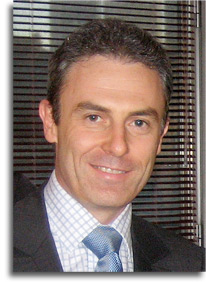By Dr. Jean-Paul Meningaud
How to avoid any mistakes for a successful lift!
Many face lifts do not last over the long term. Since their results fade over time, some specialists either refrain from suggesting them or tighten the skin too much, creating a rather unsightly “pulled-back” look. However, it is possible to achieve long-lasting and natural-looking results.
The classic signs of aging in the face are accumulations of fat in certain areas, ptosis, loss of skin elasticity, heliodermy (sun-induced aging), rosacea, etc. A face lift can be highly effective for treating the former few signs, especially in advanced cases. The latter signs are better treated with aesthetic medicine techniques, such as fillers, peels, needling and lasers. Between the two, there is a grey area that requires both medical and surgical techniques. Three mistakes are often made when dealing with the face and neck: not enough fat is removed from the neck, the maxillofacial aspect is not taken into account, and the facial muscles are not treated property, or even at all.

Treating accumulated fat
Once there is a certain volume of fat, liposuction is required. At Mondor, we monitor the liposuction procedure using an endoscope and often have to remove a bit more fat while visually monitoring the area, as there may be sub-muscular fat stores that cannot be reached using a cannula.
Taking into account the maxillofacial aspect
The main factor of premature aging in the cervicomental angle is a retracted jaw or retrogenia. Comprehensive treatment can be fairly complicated, but often a simple implant inserted under the chin corrects both the cervicomental angle and the oval of the face.
Increased facial muscle tone at rest
Our facial muscle tone increases with age. Though it can be reversed with botulinum toxin injections, the muscles of the face and neck, especially the platysmas muscles, end up shortening in length. Because of this, they section the fat, for example in the nasolabial folds or under the eyes, and tighten up the cervicomental angle, creating dewlaps (folds of sagging skin). The various stitching techniques are unable to resist this increased tonus for long. Myotomy (cutting the muscles) gives the longest-lasting results.
Face lift through isolated subcutaneous detachment
We cannot expect long-lasting results with this procedure, because it does not address any excess localised fat or the behaviour of the muscles, never mind the bones. Its only advantage is that it is quick to perform. It can be carried out in one hour, under a local anaesthetic with sedation, which reassures a great many patients. As well as its short-term results, the bad thing about this procedure is that all of the tension is concentrated on the stitches. Because of this, they stretch and tend to pull the ear lobe down towards the neck, making its natural, concave arc shape disappear.
Combined techniques (lasers, lipofilling, liposuction, needling, genioplasty, rejuvenating rhinoplasty, cheekbone implants) have enabled us to hugely improve the results of our face lifts by enhancing the features, but do not really treat the cervicomental angle for the long term. To ensure that a lift is long-lasting, we must take into account the physiopathology of aging and the behaviour of the muscles. The cervicomental angle has long been a stumbling block of aging because surgeons fail to properly deal with the muscular aspect.
Doctor Jean-Paul Meningaud 
Professor at Henri Mondor University Hospital, head of the plastic and maxillo-facial surgery department. Member of the French National Academy of Surgery. Expertise approved by the Supreme Court. Runs several university courses in aesthetic medicine.












